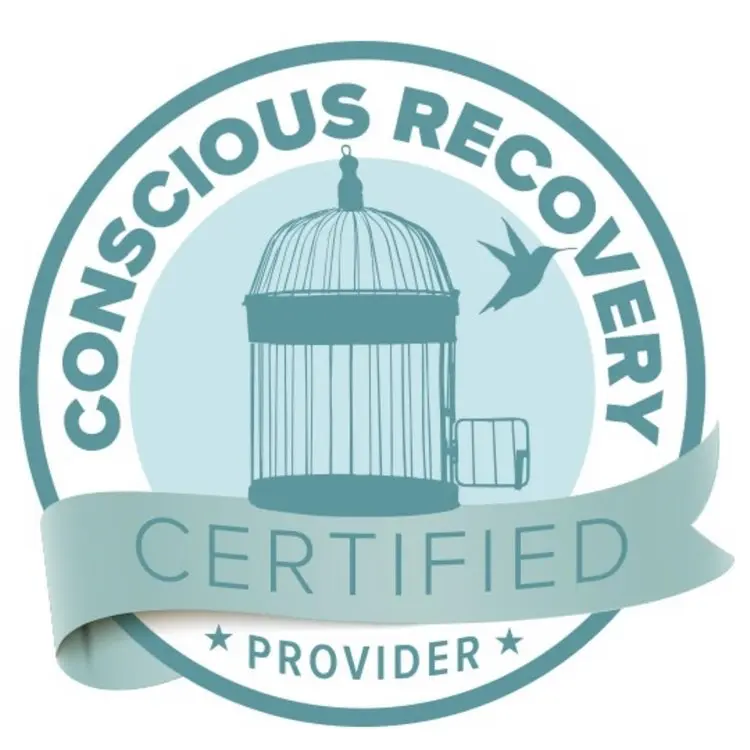When you’re struggling with anxiety, trauma, or depression, well-meaning advice to “just calm down” or “think positively” can feel not only unhelpful but dismissive. If you’ve felt frustrated by the disconnect between knowing intellectually that you’re safe while your body continues to feel threatened, you’re not alone—and there’s a scientific explanation for what you’re experiencing.
Polyvagal theory offers a revolutionary framework for understanding why our bodies sometimes react in ways our minds can’t control, and more importantly, how we can work with our nervous system rather than against it to find genuine healing. At Monima Wellness Center in San Diego, we integrate polyvagal principles throughout our trauma-informed approach, with somatic experience therapy as a cornerstone of how we help women work directly with their nervous system to create lasting change.
Understanding Polyvagal Theory: The Science of Safety

Polyvagal theory, developed by neuroscientist Dr. Stephen Porges in the 1990s, fundamentally changed how we understand the autonomic nervous system and its role in mental health, trauma, and human connection. The theory explains how our nervous system constantly evaluates safety and danger in our environment through a process Dr. Porges calls “neuroception”—a subconscious detection system that operates below our conscious awareness.
Rather than the simple “fight or flight” model many of us learned, polyvagal theory identifies three distinct neural pathways that govern our responses to the world. Each of these pathways evolved at different times in our evolutionary history and serves a specific protective function.
The Three States of the Nervous System

Understanding these three states helps explain why your body sometimes reacts in ways that don’t match your conscious understanding of a situation. Each state has distinct characteristics and serves an important survival function.
The Ventral Vagal State: Safety and Social Connection
When our nervous system perceives safety, the ventral vagal pathway activates. This is our optimal state for connection, healing, and growth.
Signs you’re in this state:
- Feeling calm and grounded
- Ability to think clearly and problem-solve
- Natural desire to connect with others
- Comfortable, easy breathing
- Present-moment awareness
- Relaxed facial expressions and body language
The Sympathetic State: Mobilization and Protection
When our nervous system detects a threat, the sympathetic nervous system activates, preparing us for fight or flight.
Signs you’re in this state:
- Increased heart rate and rapid breathing
- Racing thoughts or difficulty concentrating
- Restlessness or difficulty sitting still
- Anxiety, irritability, or anger
- Muscle tension and readiness for action
- Urge to escape or take immediate action
The Dorsal Vagal State: Shutdown and Conservation
When threats feel overwhelming or inescapable, the oldest part of our nervous system—the dorsal vagal pathway—activates, creating a shutdown response.
Signs you’re in this state:
- Emotional numbness or feeling disconnected
- Extreme fatigue or heaviness
- Difficulty accessing emotions
- Sense of hopelessness or “what’s the point?”
- Social withdrawal or isolating
- Slowed movement and flat affect
For many women with trauma histories, understanding these states provides the first glimpse of self-compassion—recognizing that their responses aren’t character flaws but protective mechanisms developed by a nervous system doing its best to keep them safe.
The Vagus Nerve: Your Body’s Information Superhighway

Central to polyvagal theory is the vagus nerve, the longest cranial nerve in the body that connects our brain to virtually every major organ. The term “polyvagal” literally means “many vagus nerves,” reflecting Dr. Porges’ discovery that the vagus nerve has two distinct branches with different evolutionary origins and functions.
These two branches work in different ways and evolved at different points in our evolutionary history, which explains why we have such varied responses to stress and threat.
The Two Branches of the Vagus Nerve
The vagus nerve isn’t a single pathway but rather two distinct branches that evolved at different times and serve different purposes in our survival and well-being. Understanding how these branches function helps explain why we can have such varied responses to stress—from feeling socially engaged and connected to completely shutting down and withdrawing.
The Ventral Vagal Branch
This newer, evolutionarily more recent branch is uniquely mammalian and supports social engagement.
What it regulates:
- Facial expressions and eye contact
- Vocal prosody (the musical quality of speech that conveys emotion)
- Middle ear muscles that help filter relevant sounds
- Heart rate variability that allows for calm, regulated states
The Dorsal Vagal Branch
This older branch, shared with reptiles, manages conservation and shutdown responses.
What it does:
- Slows the heart rate dramatically
- Decreases digestive activity
- Creates feelings of numbness or disconnection
- Can lead to fainting or collapse in extreme cases
Understanding these two branches helps explain why trauma responses can seem contradictory—why someone might sometimes feel hyper-aroused and anxious, and at other times feel completely shut down and numb.
Is Polyvagal Theory Evidence-Based?
A common and understandable question is: Is polyvagal theory evidence-based? The answer is nuanced and worth exploring, as it directly impacts how we approach treatment.
The scientific foundation, clinical applications, and ongoing research all contribute to our understanding of how effective polyvagal-informed approaches can be for healing trauma and nervous system dysregulation.
1. The Scientific Foundation of Polyvagal Theory
Polyvagal theory emerged from decades of rigorous neuroscience research by Dr. Porges and has been supported by subsequent studies examining:
- Heart rate variability as a marker of nervous system flexibility
- The relationship between vagal tone and mental health outcomes
- Neuroimaging studies showing distinct neural pathways for different defensive responses
- The autonomic nervous system’s role in social engagement and attachment
Research consistently demonstrates that interventions targeting the vagus nerve and autonomic nervous system—including the approaches used at Monima Wellness—produce measurable improvements in symptoms of trauma, anxiety, and depression.
2. Clinical Application and Effectiveness
What matters most for those seeking healing is that therapeutic approaches informed by polyvagal theory have shown significant effectiveness in clinical settings.
Evidence-based polyvagal-informed approaches include:
- Somatic therapies that work directly with the body’s nervous system responses
- Trauma-informed practices that prioritize creating safety before processing
- Mindfulness techniques that activate the ventral vagal pathway
- Breathwork interventions that regulate the autonomic nervous system
- Yoga therapy that combines movement with nervous system awareness
3. Ongoing Research and Evolution
Like all good scientific theories, polyvagal theory continues to evolve as new research emerges. Some aspects have been refined or debated within the scientific community, which is a healthy sign of ongoing inquiry.
What remains consistent is the clinical observation that understanding and working with the autonomic nervous system—the core insight of polyvagal theory—significantly improves treatment outcomes for trauma and stress-related conditions.
Neuroception: Your Body’s Safety Detection System

One of polyvagal theory’s most important contributions is the concept of neuroception—our nervous system’s constant, subconscious evaluation of safety and danger in our environment. This process happens faster than conscious thought, which explains why we might feel anxious or shut down without understanding why.
Neuroception operates below our awareness, scanning our environment and relationships continuously to determine whether we’re safe, in danger, or facing a life-threatening situation. This automatic process then triggers the appropriate nervous system state without any conscious decision-making on our part.
How Neuroception Evaluates Safety
Neuroception evaluates safety through multiple channels simultaneously:
1. Environmental cues:
- Physical spaces and their characteristics
- Sounds and noise levels
- Lighting and temperature
- Proximity to exits or escape routes
2. Social cues:
- Facial expressions
- Vocal tone and prosody
- Body language and posture
- Eye contact and physical proximity
3. Internal body states:
- Heart rate and breathing patterns
- Muscle tension
- Gut sensations
- Temperature and arousal levels
4. Past experiences:
- Trauma memories stored in the body
- Previous associations with similar situations
- Learned patterns from childhood and relationships
When Neuroception Goes Wrong
For women with trauma histories, neuroception often becomes skewed toward detecting threat, creating what’s called a “faulty neuroception” where the nervous system perceives danger even in objectively safe situations. This isn’t a conscious choice or a failure of willpower—it’s an adaptive response to past experiences where genuine threats existed.
Common signs of faulty neuroception:
- Feeling anxious in situations you “know” are safe
- Difficulty relaxing even with trusted people
- Hypervigilance that never seems to turn off
- Shutting down in situations that should feel safe
- Difficulty reading social cues accurately
Understanding neuroception helps explain common trauma responses that might otherwise feel confusing or frustrating—why certain situations trigger intense anxiety even when you intellectually know you’re safe, why your body might shut down in relationships that feel emotionally intense, and why intellectual understanding alone isn’t enough to change trauma responses.
Polyvagal-Informed Treatment: Working With Your Nervous System
Traditional talk therapy often focuses primarily on thoughts and behaviors, sometimes missing the crucial role of nervous system regulation in healing. Polyvagal-informed treatment recognizes that lasting change requires addressing the body’s stress responses alongside cognitive and emotional processing.
This approach fundamentally shifts how we think about healing, moving from trying to control or eliminate symptoms to understanding and working with the underlying nervous system patterns that create them.
1. The Window of Tolerance
Polyvagal theory introduces the concept of the “window of tolerance”—the optimal zone of arousal where we can process information, regulate emotions, and engage in therapy effectively.
Inside your window of tolerance:
- You can think clearly and make decisions
- Emotions feel manageable, not overwhelming
- You can connect with others authentically
- Learning and processing new information is possible
- You feel present in your body and the moment
Outside your window of tolerance:
- Too high (sympathetic): Anxiety, panic, racing thoughts, inability to focus
- Too low (dorsal): Numbness, disconnection, exhaustion, can’t access emotions
Effective trauma treatment helps gradually expand your window of tolerance, allowing you to stay present with difficult emotions, process traumatic material without dissociating, and build resilience in your nervous system responses.
2. Building a Foundation of Safety
Polyvagal theory emphasizes that healing happens from a foundation of safety. Before processing trauma or challenging maladaptive patterns, we must first help your nervous system experience ventral vagal activation—the state of calm, connected presence where genuine healing becomes possible.
How we create safety at Monima Wellness:
- Therapeutic environments designed to signal safety through lighting, layout, and atmosphere
- Consistent routines and transparent communication
- Teaching nervous system regulation skills before trauma processing
- Pacing treatment to honor your nervous system’s capacity
- Creating a women-centered community where co-regulation can occur
This principle guides every aspect of treatment at Monima Wellness, from the physical space to the therapeutic relationships to the sequencing of interventions.
Polyvagal-Informed Therapeutic Approaches
Our comprehensive treatment model integrates polyvagal principles across multiple evidence-based and holistic modalities, creating a synergistic approach that addresses healing on every level.
Each of these therapeutic approaches works with your nervous system in a different way, and together they create a comprehensive treatment experience that addresses trauma where it lives—in your body’s automatic responses and survival patterns.
Somatic Experience Therapy
Somatic experience therapy works directly with the body’s nervous system responses, helping you complete defensive responses that may have been interrupted during traumatic experiences.
How it works:
- Tracks bodily sensations and nervous system states in real-time
- Helps discharge trapped survival energy through gentle, titrated release
- Builds capacity to move fluidly between nervous system states
- Develops interoception (awareness of internal body states), essential for regulation
By working at the level of the nervous system rather than just the mind, somatic therapy addresses trauma where it’s stored—in the body’s defensive responses and survival patterns.
Breathwork for Nervous System Regulation
Breathwork is one of the most accessible and powerful tools for directly influencing your nervous system state. Different breathing patterns can activate the ventral vagal pathway to create calm, help move out of dorsal shutdown, and provide immediate tools for managing anxiety in daily life.
Breathwork techniques we teach:
- Slow, diaphragmatic breathing to activate ventral vagal pathways
- Extended exhale breathing to calm sympathetic activation
- Energizing breathing patterns to move out of dorsal shutdown
- Breath holds and pacing for anxiety management
- Resonance frequency breathing for heart rate variability
At Monima, we teach specific breathwork techniques tailored to your nervous system patterns, giving you practical skills you can use anywhere, anytime you notice dysregulation.
Trauma-Informed Yoga
Somatic yoga approaches movement through a polyvagal lens, recognizing that yoga’s power lies not in perfect poses but in mindful awareness of how your body responds to different movements and positions.
What makes yoga trauma-informed:
- Invitational language rather than directive commands
- Emphasis on choice and body autonomy
- Awareness of how poses might trigger trauma responses
- Focus on sensation and present-moment experience
- Creating experiences of empowerment in your body
This practice helps you befriend your body, provides opportunities to practice choosing how you respond to discomfort, and creates experiences of empowerment and agency. Unlike traditional yoga classes that may inadvertently trigger trauma responses, our trauma-informed approach honors your nervous system’s needs.
Mindfulness and Self-Compassion
Mindfulness and self-compassion practices help you develop a different relationship with your nervous system responses. Rather than judging or fighting against anxiety or shutdown, you learn to recognize nervous system states with curiosity, offer yourself compassion for protective responses, and create the internal safety that allows your nervous system to shift.
Key practices:
- Body scan meditations to develop interoceptive awareness
- Loving-kindness practices for self-compassion
- Present-moment awareness techniques
- Non-judgmental observation of thoughts and sensations
- Self-soothing and self-regulation practices
This approach is particularly powerful for women who have internalized shame about their trauma responses, finally understanding that their reactions make sense given what they’ve experienced.
The Role of Social Connection in Nervous System Healing

One of polyvagal theory’s most profound insights is that we are fundamentally social beings whose nervous systems regulate in relationship with others. The ventral vagal state evolved specifically to support mammalian bonding and connection, which means our nervous systems literally need safe relationships to heal.
This understanding transforms how we approach treatment, recognizing that individual therapy alone may not be sufficient for healing nervous system dysregulation that developed in relationships. Safe connection becomes both the context and the mechanism of healing.
Co-Regulation: Healing in Community
Co-regulation—the process by which one person’s regulated nervous system helps another person’s nervous system find regulation—is a cornerstone of healing at Monima Wellness.
How co-regulation happens:
- In group therapy, where women practice being present with each other’s emotions
- Through shared experiences in holistic modalities
- During community meals and informal connection time
- In partnerships with other women navigating similar challenges
Our women-centered group programs provide multiple opportunities for co-regulation. For many women, particularly those whose trauma occurred in relationships, experiencing safe connection within our therapeutic community becomes one of the most powerful healing experiences.
The Therapeutic Relationship as Regulation
The relationship between you and your therapist also serves as a crucial co-regulating experience.
How our clinicians provide regulation:
- Maintain their own regulated state to offer nervous system stability
- Attune to subtle shifts in your nervous system state during sessions
- Pace interventions to maintain your window of tolerance
- Model healthy boundaries and authentic presence
- Celebrate your nervous system’s protective responses
This attuned therapeutic presence creates the relational safety that allows your nervous system to experiment with new responses.
Practical Applications: Living With Polyvagal Awareness
Understanding polyvagal theory isn’t just intellectually interesting—it provides practical tools for navigating daily life with greater ease and self-compassion.
Learning to recognize your nervous system states, develop personalized regulation strategies, and create environments that support safety can transform how you experience daily challenges and relationships.
Step 1: Recognizing Your Nervous System States
The first step is developing awareness of which state your nervous system is in at any given moment. Each state has characteristic signs that you can learn to recognize.
Quick State Check:
- Ventral Vagal (Safe and Social): Calm, grounded, clear thinking, desire to connect, comfortable breathing, present
- Sympathetic (Mobilized): Racing thoughts, rapid heartbeat, restless, anxious, tense muscles, urge to act
- Dorsal Vagal (Shutdown): Numb, disconnected, exhausted, hopeless, withdrawn, slowed down
Step 2: Building Your Regulation Toolkit
Once you recognize your state, you can choose interventions that help shift toward ventral vagal regulation. Different strategies work for moving out of different dysregulated states.
Moving from Sympathetic Activation (Anxiety/Panic):
- Slow, deep diaphragmatic breathing
- Gentle movement like walking or stretching
- Cold water on face or ice on wrists
- Grounding techniques (5-4-3-2-1 sensory awareness)
- Reaching out for co-regulation with a trusted person
- Progressive muscle relaxation
Moving from Dorsal Shutdown (Numbness/Depression):
- Gentle activation through light exercise
- Upbeat music or engaging activities
- Social connection, even brief interactions
- Cold sensations to “wake up” the system
- Mindful stretching or yoga
- Spending time in nature
Step 3: Creating Safety in Your Environment
You can actively support your nervous system by designing environments that signal safety.
Environmental factors that support regulation:
- Consistent daily routines that provide predictability
- Spaces that feel physically comfortable and emotionally safe
- Relationships with people whose presence helps you feel regulated
- Natural light, plants, or access to nature
- Appropriate sensory input (not too loud, bright, or chaotic)
- Clear boundaries and expectations in relationships
- Minimizing exposure to unnecessary stress or triggering situations
The Unique Applications for Women and Female-Identifying Individuals

Polyvagal theory has particular relevance for women and female-identifying individuals, who often face unique nervous system challenges related to gender-specific experiences, biological factors, and social contexts.
Understanding these unique factors helps us create more effective, tailored treatment approaches that honor the specific ways nervous systems can be impacted by gender-based trauma, societal pressures, and discrimination.
1. Gender-Specific Trauma and Violence
Women and female-identifying individuals experience certain types of trauma at disproportionately high rates.
Common trauma experiences:
- Sexual assault and harassment
- Intimate partner violence
- Medical trauma related to reproductive healthcare
- Systemic discrimination based on gender identity
- Compounded trauma for LGBTQ+ individuals from discrimination, family rejection, or violence
These experiences often create profound nervous system dysregulation that traditional treatment approaches may not adequately address, particularly when providers lack understanding of gender-affirming care or the specific impacts of gender-based violence and marginalization.
2. Hormonal Influences on Nervous System Regulation
For many individuals, hormonal fluctuations can significantly impact nervous system regulation.
Hormonal factors that affect regulation:
- Menstrual cycle phases
- Pregnancy and postpartum periods
- Perimenopause and menopause
- Gender-affirming hormone therapy
- Hormonal birth control or other medications
Understanding these connections helps individuals recognize when hormonal changes are affecting nervous system flexibility and adjust regulation strategies accordingly. Our clinicians understand how hormone therapy, reproductive health experiences, and biological cycles can influence mental health and nervous system regulation, ensuring treatment is tailored to your unique physiological experience.
3. Social and Cultural Factors
Women and female-identifying individuals navigate unique social pressures that impact nervous system regulation.
Social factors affecting nervous system health:
- Socialization toward people-pleasing and emotional labor
- Cultural expectations around femininity and gender expression
- Gender-based discrimination and microaggressions
- The stress of navigating spaces that may not feel safe or affirming
- Balancing multiple roles and responsibilities
- Pressure to minimize or silence authentic responses
Our women-centered approach at Monima creates space to explore these dynamics and their impact on your nervous system without judgment, recognizing that each person’s experience of gender and its impact on mental health is unique.
When to Seek Professional Support
While understanding polyvagal theory and practicing nervous system regulation can be helpful for anyone, certain signs indicate that professional support would be beneficial.
If you’re experiencing any of these patterns, working with clinicians trained in polyvagal-informed treatment can help you develop more effective regulation strategies and process underlying trauma.
Signs you may benefit from professional support:
- Frequent or chronic activation in sympathetic or dorsal states
- Difficulty returning to a regulated state without external support
- Trauma history that continues to impact daily functioning
- Anxiety or depression that interferes with work, relationships, or quality of life
- Substance use as a primary regulation strategy
- Self-destructive behaviors or suicidal thoughts
- Relationship patterns that consistently feel unsafe or overwhelming
- Physical symptoms without a clear medical cause (chronic pain, digestive issues, fatigue)
At Monima Wellness, our comprehensive neuropsychological assessment process helps identify the specific nervous system patterns contributing to your symptoms and creates a personalized treatment plan addressing your unique needs.
Beginning Your Healing Journey at Monima Wellness

If you’re ready to move beyond feeling controlled by anxiety, depression, or trauma responses and instead develop a collaborative relationship with your nervous system, Monima Wellness offers the comprehensive, compassionate care you deserve.
Our Polyvagal-Informed Programs
We offer both Intensive Outpatient Program (IOP) and Partial Hospitalization Program (PHP) options that integrate polyvagal-informed approaches across all treatment modalities.
What sets our program apart:
- Women-centered environment specifically designed to signal safety
- Expert clinicians trained in trauma-informed, body-based approaches
- Holistic treatment model that honors mind, body, and spirit
- Community healing that leverages co-regulation and social connection
- Individualized care respecting your nervous system’s unique patterns
Transform Your Relationship With Your Nervous System
Your anxiety, your shutdown, your difficulty trusting—these aren’t character flaws. They’re your nervous system’s best attempt to keep you safe based on what you’ve experienced. With the right support, you can help your nervous system learn that it’s possible to feel safe again.
Ready to begin? Call us today at (858) 500-1542 or visit our get started page to schedule your consultation.
Frequently Asked Questions About Polyvagal Theory
What is polyvagal theory in simple terms?
Polyvagal theory explains how your nervous system has three different “states” or ways of responding to the world around you. Instead of just “fight or flight,” it recognizes that you can be in a calm, connected state (ventral vagal), an anxious, activated state (sympathetic), or a shut-down, numb state (dorsal vagal). Your nervous system automatically switches between these states based on whether it perceives safety or danger, often without your conscious awareness. Understanding these states helps explain why you might feel anxious or disconnected even when you logically know you’re safe.
How can I apply polyvagal theory to my life?
You can apply polyvagal theory by first learning to recognize which nervous system state you’re in throughout the day. Notice when you feel calm and connected, when you feel anxious or activated, and when you feel numb or shut down. Once you recognize your state, you can use specific techniques to shift toward regulation—like slow breathing to calm anxiety, or gentle movement to wake up from shutdown. You can also design your environment to signal safety to your nervous system through consistent routines, comfortable spaces, and relationships with people who help you feel regulated.
Is polyvagal theory scientifically valid?
Polyvagal theory is based on decades of neuroscience research by Dr. Stephen Porges and has been supported by numerous studies examining heart rate variability, vagal tone, and the autonomic nervous system’s role in mental health. While some aspects of the theory continue to be refined through ongoing research—which is normal for any scientific framework—the core insights about the autonomic nervous system and its role in trauma and regulation have strong clinical support. Therapeutic approaches informed by polyvagal theory consistently show effectiveness in treating trauma, anxiety, and depression in clinical settings.
What is the difference between polyvagal theory and nervous system regulation?
Polyvagal theory is the scientific framework that explains how your nervous system works—specifically, how it evaluates safety and switches between different states. Nervous system regulation refers to the practice of working with your nervous system to shift from dysregulated states (such as anxiety or shutdown) back to a calm, connected state. Think of polyvagal theory as the “why” behind nervous system dysregulation, and regulation techniques as the “how” of healing. Understanding polyvagal theory helps you make sense of why regulation practices work and how to use them more effectively.
Can polyvagal theory help with trauma and PTSD?
Yes, polyvagal theory has become foundational in modern trauma treatment because it explains why trauma creates such profound effects on the nervous system. Trauma often causes your nervous system to get stuck in states of hypervigilance (sympathetic) or shutdown (dorsal vagal), making you feel constantly anxious or disconnected even when actual danger has passed. Polyvagal-informed trauma treatment focuses on helping your nervous system learn to feel safe again before processing traumatic memories, which makes the healing process more effective and less likely to be retraumatizing. This approach is particularly helpful for complex trauma and PTSD that haven’t responded well to traditional talk therapy alone.
What does a polyvagal therapist do?
A polyvagal-informed therapist understands how your nervous system states affect your ability to process emotions, think clearly, and engage in therapy. They track your nervous system responses during sessions, noticing when you shift into anxiety or shutdown, and help you return to a regulated state before continuing therapeutic work. They teach you to recognize your own nervous system states and develop personalized regulation strategies. Rather than just talking about your experiences, they work with your body’s responses through techniques like somatic therapy, breathwork, and trauma-informed movement. At Monima Wellness, our clinicians integrate polyvagal principles across all our treatment modalities to create comprehensive nervous system healing.
References
- Porges, S. W. (2011). The Polyvagal Theory: Neurophysiological Foundations of Emotions, Attachment, Communication, and Self-regulation. Norton Series on Interpersonal Neurobiology. W. W. Norton & Company. https://www.ncbi.nlm.nih.gov/pmc/articles/PMC3108032/
- Kolacz, J., Kovacic, K. K., & Porges, S. W. (2019). Traumatic stress and the autonomic brain-gut connection in development: polyvagal Theory as an integrative framework for psychosocial and gastrointestinal pathology. Developmental Psychobiology, 61(5), 796-809. https://doi.org/10.1002/dev.21852
- Sullivan, M. B., Erb, M., Schmalzl, L., Moonaz, S., Noggle Taylor, J., & Porges, S. W. (2018). Yoga Therapy and Polyvagal Theory: The Convergence of Traditional Wisdom and Contemporary Neuroscience for Self-Regulation and Resilience. Frontiers in Human Neuroscience, 12, 67. https://doi.org/10.3389/fnhum.2018.00067



